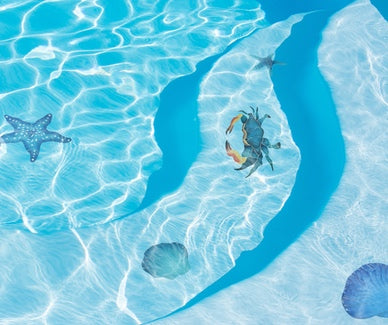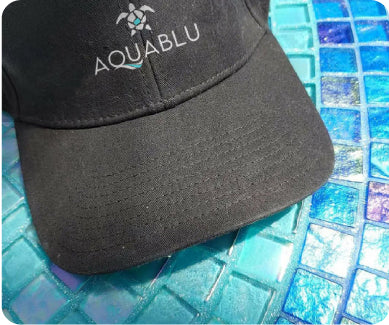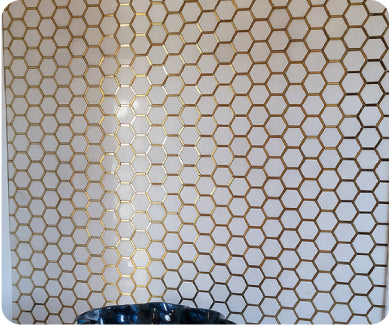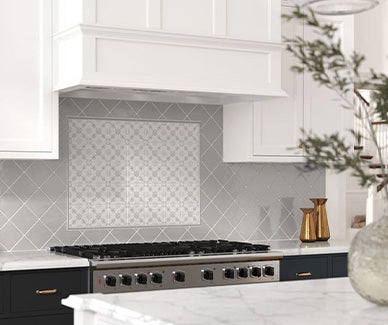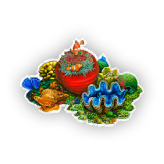How to Super Clean Your Swimming Pool

REGAIN CONTROL OF YOUR POOL!
It’s always more fun enjoying swimming pools and swimming pool tiles than cleaning them. That said, things happen: vacations, broken pumps, excessive winds – even hurricanes. It doesn’t take long to lose control of your pool as sparkling blue water turns progressively darker shades of green.
Here are some tips that can help you regain control of your pool when things start to get out of hand:
After Prolonged Windy Conditions
Wind is great for flying kites – not so much for your pool. Wind kicks up dust and grit, and every fallen leaf and grass clipping seems to find its way into the water.
The first thing to remember following windy conditions: Don’t sit idly by and do nothing. Algae spores enter a swimming pool in mass during exceptionally windy conditions. Algae are a diverse group of photosynthetic eukaryotic organisms (plants) that can cloud and color the water in no time at all – especially on the warmest days. Algae is not harmful to swimmers per se, but pools with algae may also be a safe harbor for pathogens like E-coli bacteria.
Algae need food to survive, and in a swimming pool following a robust wind, there is no shortage of tasty food for algae including specks of dust and leaves and other debris that breakdown in pool water. So this is what you want to do:
- Scoop up all the leaves and debris that got blown into your swimming pool.
- Empty the skimmer basket.
- If you can see the bottom of the pool, clean out big debris then vacuum the pool. Work slowly so you don’t stir up too much debris and dirt.
- Stop and clean the filter and the skimmer basket a second time.
- Brush the plaster and pool tiles.
- Test the water and add needed chemicals to bring everything back in balance.
If you happen to be home when the wind storm begins, be sure to cover your swimming pool and remove potted plants and store all patio furniture cushions and umbrellas.
What To Do After A Severe Storm – Even A Hurricane
Probably once or twice a year, a storm might develop in your area so intense you might think the sky is falling. Not only will this be nerve racking, your pool will also take a beating. But don’t despair. Storms pass and there are several techniques for restoring your pool water.
In the worst-case scenarios, swimming pools that have been contaminated with floodwater should be drained and refilled with fresh water. In cases where this isn’t possible or the damage is not as critical, water can be cleaned with chemicals, flocculation and filtration.
First, remove as much physical debris as possible and make sure all skimmer and pump baskets are free of debris with good circulation and filtration.
Super chlorinate the pool to at least 20 ppm and maintain pH between 7.2 to 7.4. Once chlorine has been added, follow immediately with a two-stage clarifier. As the filter system operates, add the proper amount of the first stage formula.
After six hours (or one turnover rate of the filter), add the second stage of the two-part clarifier and continue running the pool filter. The pool should clear completely within 24 hours after the second stage of clarifier is added. Backwash or clean the filter after 24 hours. Clean walls and swimming pool tiles. If the existing system is damaged, this system can work with a portable filter system as well.
Once the water is clear test for phosphates and treat with a phosphate remover if needed. Once phosphate levels have been lowered down to 200 ppb, add a good broad-spectrum algaecide, which will be effective against all types of algae.
This type of cleanup method should ensure the pool water is clean and ready for regular maintenance, which should occur between 1 and 3ppm after treatment.
The Problem With Neglected Pools
Sometimes you need to deal with very green water – maybe even tadpoles. This situation can occur when you buy a new home that has a pool that’s been inactive for some time. Or it can even happen when you go on an extended vacation only to return to a pool that got hit by several storms while you were away and maybe even the pump shut off.
Surprise surprise. Your pool turned feral during your absence. But, as bad as the situation may look, you can turn that mean green into sky blue in just a few days. Do this:
- Remove debris – Organic materials consume chlorine. Skim the surface, deep net and vacuum.
- Test and balance water – For this job, stay away from the cheaper test kits. Good test kits like the TF-100 Test Kit has the FAS DPD test which allows you to test chlorine at the high levels. Test for pH, which should be between 7.5 – 7.8. If your pH level is above 7.8 then you will use muriatic acid or pH decreaserto lower your pH. If your pH is below 7.5 then use pH increaser (also called soda ash) to increase your pH.
- Test cyanuric acid (CYA) – Think of CYA as sunscreen for your chlorine. If your CYA is too low (below 30) then your free chlorine (FC) will be rapidly consumed by the sun, and if your CYA is too high (above 50) then you greatly reduce the chlorine’s effectiveness to kill algae. Try for a 30 – 60 ppm range.
- Test Free Chlorine (FC) – Using a FAS DPD test kit, record the Free Chlorine.
- Shock your pool – You can Refer to a CYA – Chlorine Chart to determine your shock level. Use a powerful shock with at least 70 percent available chlorinethat can handle both algae and bacteria.
- Clean your filter – You will need to do this often as the shock kills off the algae.
- Vacuum – Vacuum up debris and dead algae from the bottom of the pool. Wipe down walls and pool tile.
- Run filter and monitor -- Allow your filter to run and check your pool regularly to be sure the algae doesn’t come back.
Let the experts at AquaBlu Mosaics help you with your next pool build or renovation! If you have questions about materials, colors or designs, give us a call at (800) 971-1442 or fill out our contact form.



























